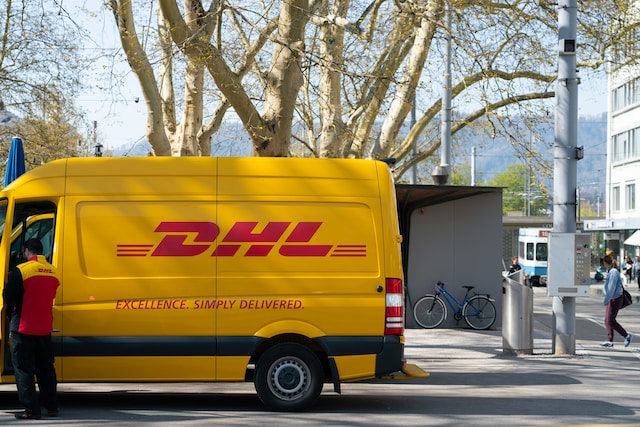 How can 3PL Improve Customer Experience and Business Operations?
How can 3PL Improve Customer Experience and Business Operations?
The rise of 3PL companies has developed alongside the boom in eCommerce. With 2.14 billion o...
Read More
With the cost of getting your products out to customers creeping up, we’re always keen to un...

With the cost of getting your products out to customers creeping up, we’re always keen to understand the latest developments in the broader eCommerce delivery and order fulfilment market. This article will examine how small retail business leaders can choose the most cost-efficient and effective delivery and order fulfilment service for their needs.
Supply chain and staffing issues have disrupted many parcel carriers’ next-day delivery options. Selecting the right parcel service or order fulfilment partner can greatly impact your customer's experience. Unfortunately, it also represents a major expense to eCommerce businesses in terms of time and money.
Customer expectations around online retail and eCommerce delivery services are changing, and not losing those customers to the competition means you must change too. Choosing the perfect solution to connect customers with your products in a cost-effective manner depends on several factors:
We’ll go through each of these points and discuss what small eCommerce business leaders should be thinking about as they consider the relevance of each one for their specific operational requirements. This article will give you some handy tips on comparing the different delivery and order fulfilment services.
eCommerce businesses need a reliable means of getting their products out to their customers. Aside from the virtual storefront, it’s the most crucial aspect of customer service for an online business to clinch those repeat customers. The order fulfilment process is part of your business where you can get that final “wow!” from your customers.
Now that we’ve covered the delivery process from start to finish, let’s focus more closely on how a small eCommerce business can choose the right parcel service.
You’ve done everything right when building your online shopfront, the experience is seamless, and buyers are starting to flock in—but now you’re wondering how to ship your products to customers more efficiently.
The order fulfilment and eCommerce delivery service is one of your business's most critical customer-facing aspects. Still, it can become time-consuming and expensive without a shipping strategy.
The Baymard Institute, a user experience research group carrying out large-scale studies on online browsing habits, have shown that the most common reason for eCommerce shopping cart abandonment was extra costs, such as shipping, taxes and fees, being too high. Of those studied, 48% abandoned their carts for this reason, almost double the number of respondees for the next most common cause.
Delivery isn’t just an additional part of what you do—it’s a key influence on your business's performance. By putting thought into your strategy around delivery, your customer's perception of your service improves, the average order value increases, and you can begin shipping internationally.
Cost is one of the first things you should concern yourself with. Will you offer free shipping across the board or only on orders over a certain amount? Will it be an exact amount or a flat rate? Always bear in mind that free shipping isn’t really “free”, as you’re shifting those costs to your bottom line. As a small eCommerce business, think carefully about your profit margins before offering this option and consider increasing your prices to cover it.
If you choose to increase your prices to cover the cost of free shipping, you should also do your market research. For example, what are your competitors charging, and do they also offer free shipping?
If you offer free shipping on shopping carts at or over a certain value, then one thing you could consider is offering free shipping at the average value at which shopping carts are abandoned. This can help entice customers interested in your products, since they’re adding them to their carts, to press that “Buy Now” button and enter their card details.
When you’re asking which couriers offer the most affordable shipping, you’re going to have to consider four factors:
We’ve already discussed how speed—like a next-day eCommerce delivery service—will increase cost, but what about the other factors? Figuring these out can help you compare parcel services and let you more easily pick an option.
Evri is one of the first carriers to think about when it comes to considering the cheapest eCommerce delivery services. Though they can be expensive for items larger and heavier than 15kg, their prices for smaller parcels and large letter-sized items are cost-friendly. So if you’re a fashion eCommerce business, and you’re only sending out one or two items in a larger mailing bag, they will be one of the cheapest shipping options for your needs.
DPD offer freight and parcel services up to 999 kilograms, with several delivery speeds: from next-day pre-12:00 PM slots to 24-hour and 48-hour options. Though slightly more expensive than Evri for smaller consignments, their delivery options will give customers SMS updates and a text when their hour-long delivery slot is available. This allows your customers to plan around their delivery and not miss their parcel—a source of many customer service woes.
DHL are competitive in international shipping. They co-own and partner with airlines across the globe to offer an air freight service, offering international door-to-door delivery options. Like the other couriers in this list, they have several delivery speeds, from Urgent (1-2 days) to Economy (5-7 days). They can also support the delivery of refrigerated or temperature-controlled products, and they’re one of the cheapest options for large parcel delivery in the same country.
Yodel is a courier that has made waves in the UK for budget-friendly shipping options. Although they can be slower than the others on this list—with their Xpress service offering 1-2 day shipping rather than a guaranteed next-day delivery—they allow an eCommerce business to ensure a 2-hour delivery window through their Xpect and Xpert options. Unfortunately, Yodel doesn’t offer an international service, but they're an excellent option for cost-efficient delivery within the UK.
Royal Mail continues to be one of the UK's most widely-used eCommerce delivery services. Their tracking options exceed expectations, and parcels typically arrive when advertised, unless during a peak period such as Christmas when delays of one or two days can happen. In addition, they offer several parcel services, including an International Signed For delivery option, which allows you to be notified once your shipment has been delivered.
As an online retailer, you need to let your customers know what the cost of delivering their item will be, and reducing the cost of eCommerce shipping is one thing you can do to ensure you get that sale.
However, reducing shipping costs is a challenging balancing act and can be intimidating if you’re a small eCommerce business or just getting into online retail. Although there are plenty of factors to consider, here are five that can help you to keep those shipping costs low:
If you’re spending a lot of money on shipping products because of your current packaging, consider a short-term investment in a custom packaging solution that more closely fits your product. This reduces the overall weight of your parcel and might pay off over the long term.
Flat-rate shipping lets you manage the often variable costs of sending your products out to customers by setting a fixed fee while offering discounts for orders over a specific value. This method also allows you to manage the cost of sending products of different shapes, sizes and weights, making planning your business expenses more manageable.
Staying on top of the pricing changes for your shipping carrier enables you to make better decisions on whether to switch to a different parcel service or not. Many carriers will adjust their rates each year, and if you can’t find a cheaper alternative, you can change your prices or choose to cover the increased costs.
Buying boxes and mailing supplies directly from your supplier can often be a pricy option, although it will be easier. For a relatively small investment (at least over the long term), you could have custom packaging supplies manufactured in bulk, increasing brand awareness and providing a lower cost per unit.
You don’t have to send thousands of packages daily to ask your parcel service if they provide a discounted rate. They might offer lower-cost options for taking out a year-long contract or cheaper shipping options for small eCommerce businesses based on volume.
eCommerce order fulfilment services
Another option for eCommerce businesses is to take the hassle and intimidation out of connecting your customers with their purchases by using the services of an eCommerce order fulfilment partner.
These partners typically integrate with your online storefront through a plugin. In addition, their inventory management systems will automatically update your shop if a product goes out of stock, as well as handle the storage of your products, picking and packing orders, and making sure your customers across the globe get a reasonably-priced and quick delivery experience by working with several different parcel services.
Although choosing an eCommerce fulfilment partner is slightly different to selecting an eCommerce delivery service, it’s worth considering some similar factors:
By choosing an eCommerce fulfilment service, you’re taking the headache out of shipping and inventory management. Still, you should be sure that the company you’re going with matches your needs and doesn’t harm your customer’s brand experience. Working with an order fulfilment business can help you save money and time on labour and packing supplies and offer premium options such as late order cut-off.
If you’re an eCommerce business looking for an order fulfilment partner to assist you with all matters of the delivery and inventory management process, Core Fulfilment would love to hear from you. With our late order cut-off, you can stand apart from your competitors. Regardless of how many sites you sell from, you’ll be safe in the knowledge that we’ll receive your customers’ orders. Reach out to us to discuss your needs.